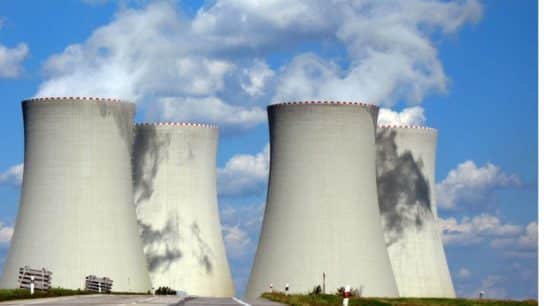Hydrogen exists everywhere, in the air, in the water. Hydrogen is widely used in different industries, including for refining petroleum and producing fertilisers. Yet, what attracts people’s attention is its ability to work as a fuel while generating zero emissions. We take a look at the pros and cons of hydrogen energy, and whether it has a role to play in the global green energy transition.
—
Tesla CEO and tech billionaire Elon Musk has publicly shamed and criticised treating hydrogen as an alternative fuel and its potential role in the green energy transition. Granted, his electric vehicle business is centred around rechargeable lithium-ion batteries, in which hydrogen is often regarded as an adversary or in competition of.
But there is a misconception surrounding hydrogen and is regarded as an energy source. In fact, like lithium-ion batteries, hydrogen is a method for storing energy instead of generating energy. Energy storage is of the utmost importance in the renewable energy industry due to the problem of intermittency of non-dispatchable renewable energy sources. For instance, solar power cannot produce energy during the daily peak demand at night. Without overcoming this problem, solar power will never be the primary energy source and replace fossil fuels.
As a result, scientists have been studying to optimise energy storage for years so that the supply of renewable energy can become stable, and we no longer need to resort to dispatchable fossil fuels. Hydrogen and lithium-ion batteries have been found to be the two methods that demonstrate the greatest potential for small-scale applications such as motor vehicles.
Hydrogen can produce electricity when combined with oxygen in a fuel cell. The reason why hydrogen is often misunderstood as an energy source instead of an energy carrier is that a fuel cell generates electricity, whereas a battery stores electricity. What’s more, pure hydrogen can rarely be found on Earth; it requires energy to produce hydrogen.
Is Hydrogen Energy ‘Green’?
Hydrogen as a fuel is clean, as its only by-product, when burned, is water. But the production of hydrogen has three levels of cleanliness: grey, blue, and green. Grey hydrogen refers to hydrogen that is made from fossil fuels, specifically natural gas. It is produced through a process called steam reforming, which is based on the equation that methane, the primary component of natural gas + oxygen equal to carbon dioxide + hydrogen. According to this equation, carbon dioxide, a greenhouse gas, is emitted during the process of extracting hydrogen. Grey hydrogen will turn blue if carbon capture is adopted during the production.
On the other hand, there is green hydrogen; hydrogen is produced from renewable energy and subject to another chemical process called electrolysis (water splitting), in which natural gas is not required as a feedstock. As water is composed of hydrogen and oxygen, the process separates the elements of water by passing an electric current through a liquid containing ions. If the electric current is provided by renewable energy, the hydrogen extracted can be described as green. Unfortunately, only about 5% of the hydrogen produced today is green.
You might also like: The Problem With Blue Hydrogen Energy
Is Hydrogen Efficient?
People often compare hydrogen-powered cars with electric cars (EVs). Supporters of hydrogen-powered vehicles claim that they can travel further than EVs on a single charge, and they can be refuelled in a shorter time. But the production of hydrogen itself loses significant amounts of energy before the cars hit the road.
According to the World Economic Forum, about 30 to 35% of the energy used to produce green hydrogen is lost during the process of electrolysis. Hydrogen also needs to be stored and transported. If it is stored as a gas, it needs to be compressed with high pressure. If stored as a liquid, it requires cryogenic temperatures of about −252.8°C to prevent evaporation. About 10% of the energy is lost in this phrase. When hydrogen is converted to electricity inside the fuel cells, up to 50% of energy is lost. Although papers have shown differences in the data on the percentage decrease of energy in each phase of manufacturing, all of them agree that hydrogen is far from being efficient. It is estimated that the round-trip efficiency, the percentage of electricity put into storage that is later retrieved, is only about 30%. In comparison, lithium-ion batteries have a round-trip efficiency of up to 95%.
The Future of Hydrogen
We still have a long way to go to make hydrogen energy more efficient, and we should focus on growing green hydrogen rather than grey, blue or any other colours. Some critics even go as far as arguing that it is better to concentrate on energy carriers that already exhibit great efficiency today. There are multiple options of energy carriers that exist today with much higher efficiency, like rechargeable batteries, pumped-storage hydroelectricity, compressed air, and molten salt.
But regardless of the growing debates of the pros and cons of hydrogen energy, more governments and countries are betting on this resource and are investing into hydrogen-related technologies. Many European countries like Germany and the United Kingdom have decided to spend billions on the industry of low-carbon hydrogen, millions of which are specifically dedicated to fuel cells and hydrogen stations.
Indeed, we should not abandon any potential opportunities of scaling up sustainable energy, but how governments invest matters. Partisans of hydrogen ascribe to the belief that hydrogen-powered cars are not popular due to the lack of infrastructure like hydrogen stations, which was once the case for electric cars; subsidies for such infrastructure would lower the price and boost the market.
However, the crux of the hydrogen fuel problem is not an economic one, but a physical one. If the main objective is to achieve carbon neutrality by developing green and renewable energy sources, having a high round-trip efficiency should be the only criterion for energy carriers. Hydrogen cannot hold most of the energy after all the stages of manufacturing, and it will never be comparable to rechargeable batteries without addressing this physical problem. Hence, subsidies and investment need to go into research and development first, with the aim of reducing the stages of manufacturing and improving its performance in holding energy, and not commercialisation.
Aside from the pros and cons of hydrogen energy, let’s talk about: The Future of Automotive: What Will We Be Driving in 50 Years?














